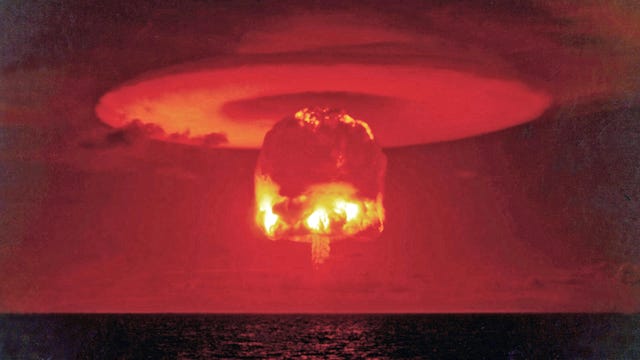
This Is What a Nuclear War Between the U.S. and Russia Could Look Like
It would likely involve more than 3,000 warheads used by both sides, killing well over 100 million Americans and Russians.
Mar 29, 2022
- The Russian invasion of Ukraine has ushered in a return to large-scale conventional warfare.
- If the United States and Russia were to engage in direct air, land, and sea conflict, the risk of nuclear war would become much more likely.
- An all-out nuclear war would likely involve more than 3,000 warheads used by both sides, killing well over 100 million Americans and Russians.
Russia’s invasion of Ukraine is already one of the most destructive and lethal wars in recent memory, from the shelling of cities to the use of thermobaric “vacuum weapons.” That’s led experts and civilians, alike, to wonder what—if NATO and the U.S. become directly involved in the conflict—a nuclear war between Washington and Moscow might look like.
Advertisement – Continue Reading Below
Here, Popular Mechanics examines two classic nuclear attack scenarios: a counterforce strike and a countervalue strike. The counterforce scenario examines what might happen if Russia attacked America’s nuclear arsenal with its own in an attempt to neutralize America’s nuclear-capable bombers, submarines, and land-based missiles. The second, more devastating countervalue scenario involves an all-out use of nukes to destroy the United States’ ability to wage war, with the side effect of reducing American society to a pre-industrial level of development.
Before we begin, we should note that neither of the scenarios are likely to occur in our lifetimes. Unlike conventional war, a nuclear war is not something that happens out of the blue. Both the United States and Russia believe that a nuclear war is not winnable and should never be fought. Both countries also subscribe to a policy of “assured destruction,” meaning any attack on either nation would result in the attacker’s destruction. Assured destruction is a powerful disincentive to using even just one nuclear weapon, let alone using hundreds in an apocalyptic attack. Still, a nuclear war is not impossible.
Advertisement – Continue Reading Below
How Would a Nuclear War Start?
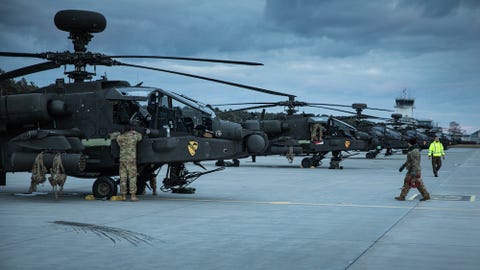
In the scenario, U.S. forces, including those of the 1st Air Cavalry Brigade pictured here, intervene to stop Russia’s invasion of Ukraine.
U.S. Army National Guard photo by Sgt. Agustín Montañez
The United States has been steadfast in its refusal to become directly involved in the Russo-Ukrainian War … and for good reason. Under Article 5 of NATO’s founding treaty, Washington has extended the protection of its “nuclear umbrella” to NATO nations, which means the U.S. would treat a nuclear attack on those countries in the same way it would an attack on American soil; in other words, it protects them by promising to retaliate in kind to any nuclear strikes on their territory.
Advertisement – Continue Reading Below
However, the U.S. does not have the same security relationship with Ukraine as it does with NATO member nations and allies such as South Korea and Japan. As a result, Ukraine has found itself with no country willing to actively defend it against nuclear-armed Russia for fear of entering into a nuclear war. Putin’s Russia, seeing Ukraine as alone and vulnerable, decided to attack.
In our scenario, the President of the United States has ordered the U.S. military to intervene on Ukraine’s behalf, destroying Russian Ground Forces units in the field and downing Russian fighter jets. Five U.S. Army brigades—backed up by fighters, bombers, and cruise missiles—drive from Poland to Kyiv, then on to Donetsk. The intervention threatens to upset Putin’s chessboard and injects a new force into the conflict that could beat Russia’s army in the field.
While this might result in a conventional victory, things could rapidly take a sinister turn. If U.S. forces routed their Russian counterparts and neared the Ukrainian-Russian border, Russia might target them with tactical nuclear weapons (typically 20,000 tons of TNT or less) to stop their advance.
Advertisement – Continue Reading Below
Once that happens, all bets are off. The United States might choose not to retaliate, in order to avoid escalating, or it might well decide to retaliate with tactical nuclear weapons of its own. At that point, either side could opt to massively escalate, reasoning that the first side to use larger, more powerful strategic nuclear weapons could gain a survival advantage over the other, launching a first strike so devastating it destroys most of the enemy’s strategic arsenal.
All-Out War
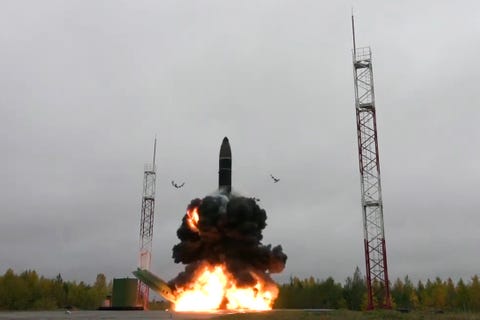
A Russian Topol-M intercontinental ballistic missile test-launched from a missile silo at Plesetsk Cosmodrome, September 2019.
Russian Defence MinistryGetty Images
Advertisement – Continue Reading Below
In our scenario, we’ll look at a surprise nuclear first strike that leads to all-out war. One country decides it has exhausted all other options and must destroy enemy nuclear forces before it can use them.
We’ll assume Russia strikes first. U.S. strategic early warning forces abruptly detect SS-19 intercontinental ballistic missiles (ICBMs), each loaded with a nuclear-armed Avangard hypersonic glide vehicle, launched from silos near Orenburg, Russia. The six hypersonic weapons are not particularly accurate, but loaded with devastating two-megaton warheads (two million tons of TNT), so there’s no need for pinpoint precision. Avangard hypersonic glide vehicles rain down on early warning radar bases across North America, destroying the sensors needed to detect the main surprise attack.
Moments later, Russia launches its entire force of 304 land-based ICBMs carrying a total of approximately 1,183 thermonuclear warheads. The ICBMs would target America’s nukes, including the 400 ICBM silos sprinkled across the western United States, nuclear bomber bases in Missouri and Louisiana, and missile submarine bases at Kings Bay, Georgia, and Kitsap, Washington. Each location would likely receive a minimum of two nukes in case the first weapon fails to detonate.
Advertisement – Continue Reading Below
The nuclear surprise attack, known as a “first strike,” would primarily target America’s land-based nuclear arsenal. Montana, Wyoming, and North Dakota would receive at least 800 nuclear strikes between them. Cities like Seattle, uncomfortably close to Joint Base Kitsap, the home of the Pacific Fleet’s ballistic missile submarines, would likely take some damage.
The strike, known as a counterforce strike, would be concentrated away from major population and industrial centers. Places like New York City, the San Francisco Bay Area, and entire regions of the U.S. would be spared. Such an attack would likely kill no more than 20 million Americans and leave much of the country intact.
Most importantly, the strike would preserve Washington’s ability to communicate with its nuclear forces. Moscow would then open a dialogue with Washington, stating that the bulk of American nuclear weapons—land-based missiles and bombers—have been destroyed, but America’s infrastructure and cities are still intact. Russia’s leadership would then warn that any attempt to retaliate would unleash the rest of the country’s nuclear weapons, killing millions more and destroying the U.S. as a military, political, and economic entity.
Advertisement – Continue Reading Below
How Bad Would It Get?
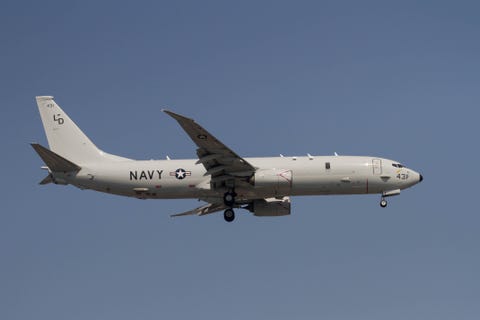
U.S. Navy P-8 Poseidons would hunt Russian missile submarines in an attempt to sink them before they could launch their missiles.
SOPA ImagesGetty Images
At this point, the United States could surrender and face an uncertain future, or it could fight back. Fighting back would mean launching what remained of its ICBMs and any bombers that survived, using them to hunt down remaining Russian nuclear weapons. Bombers are particularly useful in this situation, as they could be used to actively hunt down what remained of Russia’s ICBMs, particularly those like the SS-27 mounted on 16-wheeled missile transport trucks. The Navy would begin hunting Russian missile submarines, including those that might be parked off the East and West Coasts of the U.S., armed with nuclear-tipped cruise missiles.
Advertisement – Continue Reading Below
Would a nuclear counterattack achieve anything? In our scenario, the Joint Chiefs of Staff argue that the United States has nothing to lose by trying, and in doing so, could attempt to reduce the overall damage of an inevitable second strike. After all, there is little reason to trust Russia at this point. The United States launches a counterstrike, but it is seriously hobbled by a lack of forces, with most of the U.S. Strategic Command’s Minuteman III ICBMs and B-2 and B-52 bombers destroyed in the first strike.
“An attack on just one city in the U.S. could cause fatalities in the hundreds of thousands and just as many injuries.”
Russia launches the remainder of its nukes, this time with an eye toward destruction of anything that could contribute to the war effort. The strike targets America’s remaining military bases, industry, energy, communications, and transportation facilities—practically anything that makes 21st-century life worth living. Cities are not targeted as population centers, but buildings, complexes, and other facilities inside them would be destroyed without mercy.
Advertisement – Continue Reading Below
The result would be near-total devastation with global consequences. “An attack on just one city in the U.S. could cause fatalities in the hundreds of thousands and just as many injuries,” Tara Drozdenko, director of the Global Security Program at the Union of Concerned Scientists, tells Popular Mechanics. “Fires generating soot could block sunlight, possibly for decades, causing global cooling and shortening growing seasons, causing worldwide food insecurity.”
According to a recent open-source study (not published in a peer-reviewed journal), such an all-out attack would kill as many as 104,241,000 Americans. Millions more injured in the attacks and unable to reach a hospital would likely succumb to their injuries. Still more, living downwind from blast zones, would be at risk of illness or death from radioactive fallout. Those that survive would be left without power, medical care, communications, and viable food and fuel distribution networks. The following winter would be particularly harsh, sparing only those reasonably healthy and with access to food and the ability to warm themselves.
Advertisement – Continue Reading Below
How badly would Russia suffer? It really doesn’t make much difference, because there would be hardly anyone left in the United States in a position to notice. Russia has a population of 144 million people with a larger percentage of its population in rural areas away from the direct effects of nuclear attack. Russia itself would certainly suffer deaths in the tens of millions, but in this scenario, a death count seems like a futile means of keeping score. In this scenario, both sides have lost.
How Likely Is a Nuclear War?
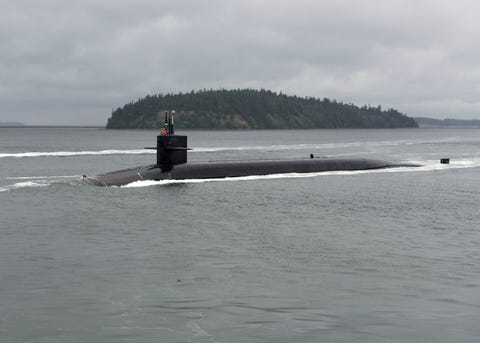
Even in the event of surprise nuclear attack, an adversary would have to contend with America’s fleet of ballistic missile submarines, including USS Kentucky, pictured here. Each carries 20 Trident D-5 ballistic missiles with a total of more than 100 thermonuclear warheads.
U.S. Navy photo by Mass Communication Specialist 1st Class Amanda R. Gray
Advertisement – Continue Reading Below
A nuclear war is extremely unlikely. All nuclear powers implicitly operate by the principle of assured destruction—a nuclear attack on them guarantees a devastating response. If Chinaattacks Russia, it can be assured it will suffer a devastating counter strike. The instinct for survival in all rational human beings causes them to make decisions that steer them away from really horrific outcomes like nuclear war.
Russian President Vladimir Putin has indicated that he understands the peril of nuclear weapons. “U.S. and Russian leaders understand that a full-scale nuclear war would be a civilization-ending event,” Drozdenko explains. “That is why just last month, leaders of five nuclear weapons states, including the United States and Russia, called the avoidance of war between nuclear powers their ‘foremost responsibilities,’ and affirmed that a nuclear war cannot be won and must never be fought.”
In the current situation, lacking a direct U.S. and Russian confrontation, the likelihood of nuclear war is somewhere near zero. Having said that, accidents can happen and disagreements between two seemingly rational parties can and do quickly spiral out of control. Mad men, unbound by reality and a survival instinct, might also choose nuclear war. In any case, all of human civilization would be bound to their choices. The lesson is that as long as nuclear weapons exist, there is a possibility they could be used.
Advertisement – Continue Reading Below
How Do We Avoid This?

Hiroshima after the atomic bombing of August 6, 1945. The 20-kiloton nuclear bomb killed up to 126,000 people. Most Soviet ICBM warheads are in the 800-kiloton range and would cause exponentially more casualties and damage to populated areas.
Universal History ArchiveGetty Images
The scenario outlined above is an outlier, but one still within the realm of possibility. In our scenario, both sides are devastated with no winners.
“Because of the dire consequences of a nuclear conflict, it is incumbent on nuclear states to seek diplomatic solutions,” Drozdenko says. “The current situation in Ukraine carries some risk of nuclear escalation from misunderstanding or miscalculation. But it is encouraging that the U.S. has not responded to Putin’s threats by raising its own alert status. It is important for cooler heads to prevail and to provide diplomatic off-ramps for this conflict.”
Russia’s invasion of Ukraine will almost certainly not start an all-out nuclear war. Yet the tension between the U.S. and Russia over the war is a reminder that as long as both sides have nuclear weapons, the possibility of a nuclear war happening is not zero. It’s not a situation where more nuclear weapons will make either side safer. Diplomacy could ensure that both sides, though they want very different things, can work together to avoid the one thing everyone doesn’t want—nuclear war.
Kyle Mizokami Writer on Defense and Security issues, lives in San Francisco.
Need to know the biggest scientific breakthroughs in our galaxy? Get our newsletter for most fascinating space insights. Email addressI’M IN. By signing up, I agree to Hearst Magazines’ Terms of Use(including the dispute resolution procedures); my information will be used as described in the Privacy Notice.
No comments:
Post a Comment